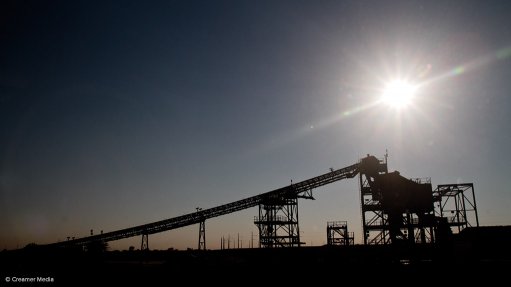
Photo by: Duane Daws
JOHANNESBURG (miningweekly.com) – South Africa’s mining production increased by 0.2% year-on-year and 7.9% month-on-month during April, despite the ongoing strike on the Rustenburg platinum belt that was currently in its twenty-first week, showed the latest data released by Statistics South Africa (Stats SA) on Thursday.
The biggest contributor to the year-on-year increase was iron-ore, of which production had increased by 6.7%, contributing 1.2 percentage points, followed by ‘other’ metallic minerals, with a contribution of 0.8 of a percentage point, and manganese ore and nickel, which each contributed 0.7 of a percentage point.
Platinum-group metals (PGMs) were a significant negative contributor to the year-on-year figure, subtracting 2.4 percentage points.
However, PGMs were the major contributor to the 7.9% month-on-month increase, with production in the sector increasing by 39.1% from March to April.
Banking group Nedbank’s economic unit stated that this was “surprising as the PGMs industry is still being negatively affected by the ongoing strikes”, stating that the rise was likely the result of a low base in March.
“Production remains well below normal levels,” Nedbank noted.
BNP Paribas economist Jeffrey Schultz noted that the month-on-month increase in platinum production had to be seen in context of a nearly 50% cumulative contraction in production since January when the strike began.
“In level terms, it remains clear that the impact of these strikes continues to strangle PGM production and the sector as a whole, with total mining production growth having contracted over 7.2% quarter-on-quarter in the three months ended April,” he said.
The main contributors to the 7.2% decrease were PGMs, which contributed -5.7 percentage points, and iron-ore, which contributed -1.6 percentage points.
Seifsa chief economist Henk Langenhoven said these numbers indicated that the decline was no longer taking place at as rapid a pace as it did during the first quarter of the year.
Nedbank added that the performance of the mining sector was likely to be volatile in the months ahead, pressured by labour unrest, infrastructure constraints, a challenging policy environment and slower growth in China.
Schultz added that while the latest figures were better than expected, it did not change BNP’s negative near- to medium-term outlook for the sector.
“This is clearly reflected in the weak growth in PGM production but also the industry as a whole. This leaves us expecting the mining sector to remain the largest drag on second-quarter gross domestic product growth,” he stated.
Meanwhile, mineral sales decreased by 5.1% year-on-year in March, although only gold and PGMs recorded negative growth rates, with declines of 37.7% and 26.4% respectively.
Seasonally adjusted mineral sales at current prices decreased by 10% in March compared with February, following month-on-month changes of 4.3% in February and 6.2% in January.